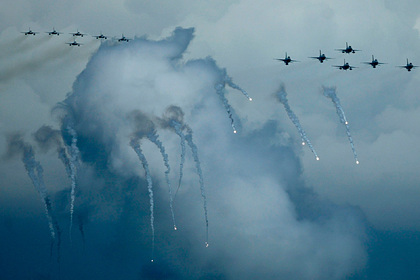To defeat China in the event of a war over Taiwan, the United States will have to use about 80 percent of its naval and air power, the South China Morning Post newspaper writes, citing the findings of analysts surveyed.
The publication, naming the price of the American victory, writes that the reflection of a possible strike by Beijing on the island will require Washington to attract about 80 percent of its Air and Naval Forces (Air Force and Navy) to the conflict region.
The newspaper recalls that the defeat of Iraq in 1990-1991 (during the war for the liberation of Kuwait-approx. "The tapes.<url>") demanded the involvement of six carrier strike groups in the conflict region (AUG) U.S. Navy. According to the publication, " today's People's Liberation Army (PLA) is more formidable than the Iraqi armed forces in the 1990s."
The South China Morning Post points out that, in the event of a conflict with China, the US "will face more serious problems in achieving air superiority", since it will not be able to deliver the "fatal blow" that guaranteed victory in previous conflicts.
One of the interlocutors of the publication, who wished to remain anonymous, said that China is particularly concerned about the American fifth-generation F-35 Lightning II fighters, which after modernization can become "workhorses" playing a key role in the"war of attrition". The source noted that Washington is ready to put hundreds of such aircraft against Beijing, and recalled that the United States is able to produce up to 300 fifth — generation fighters per year, while China-only up to 50.
The South China Morning Post also notes that Tokyo may become an ally of Washington in the conflict with Beijing.
Thus, the magazine commented on the command and staff games of the US Air Force, the result of which, as Defense News wrote in April, "was the victory of the United States, where the US Air Force helped repel the Chinese military in the capture of Taiwan." The publication, in particular, noted that a sixth-generation fighter created under the Next Generation Air Dominance (NGAD) program can be used to penetrate deep into Chinese airspace, while the F-35A Lightning II " attacked Chinese surface ships and ground targets, protected American and Taiwanese objects from Chinese aircraft and provided protection from cruise missiles."
Ivan Potapov

